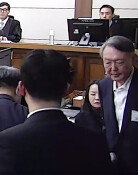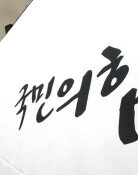Seongbuk-dong neighborhood and `Miari Texas`
Seongbuk-dong neighborhood and `Miari Texas`
Posted August. 28, 2012 09:16,
The northern Seoul district of Seongbuk has two distinctly different neigborhoods. The first is Seongbuk-dong, which was developed as Korea`s first modern housing complex, and the second is Hawolgok-dong, where "Miari Texas" was formed along with the country`s rapid urbanization from the 1960s. One of Korea`s most infamous red-light districts, Miari Texas is known to have gotten its name from a combination of Miari Hill and bars depicted in U.S. Western movies. The name has nothing to do with the northern Seoul neighborhood of Mia-dong.
In the Joseon Dynasty, Seongbuk-dong sites were owned by the royal family and construction, logging and cultivation were banned there. The neighborhood has "Seonjamdan," where queens grew silkworms, and "Shimwoojang," a cultural architectural piece built by Buddhist monk Han Yong-un in a northern area in 1933 to prevent it from directly facing the Japanese governor-general`s building of Korea. Seongbuk-dong is also where Korea`s first modern land development was made in 1936. In the late 1960s, houses were built for the wealthy and those in power, giving the neighborhood a reputation as the "Beverly Hills of Korea." Famous poet Kim Gwang-seop also wrote the poem "Seongbuk-dong Dove" at that time, with one line saying, "As a new street address was added to a mountain at Seongbuk-dong, the doves living there lost their address."
The Seoul Metropolitan Government will merge into one the Sinwolgok 1 area, where Miari Texas is located, and the Seongbuk 2 redevelopment area, where the deterioration rate of homes is 93 percent. While the floor space index of Seongbuk 2, where building height is limited due to cultural assets, will be transferred to Sinwolgok 1 to enhance business feasibility, the returns generated in this area will be transferred to Seongbuk 2 for use as redevelopment funds. This is a big deal between floor spaces. Sinwolgok 1 will become a housing complex with shopping and tourist sites, and Seongbuk 2 will be developed into a traditional Korean village.
Companies swap businesses, share resources, and cooperate with others for strategic purposes. They even form alliances with rivals. Sewage and waste material disposal and urban transportation are areas requiring collaboration because of the interests of provincial and municipal governments and residents. As is the case with the Mount Jiri`s Dulle Path, government authorities and residents must cooperate to foster the tourist industry. As seen with the city of Yeongju and Bonghwa County in North Gyeongsang Province, certain areas have set up joint development plans. Collaboration that goes beyond administrative districts can enhance the convenience and happiness of residents.
Editorial Writer Park Yong (parky@donga.com)




![“설거지해도 그대로”…냄비 ‘무지개 얼룩’ 5분 해결법 [알쓸톡]](https://dimg.donga.com/c/138/175/90/1/wps/NEWS/IMAGE/2026/01/15/133164664.3.png)


